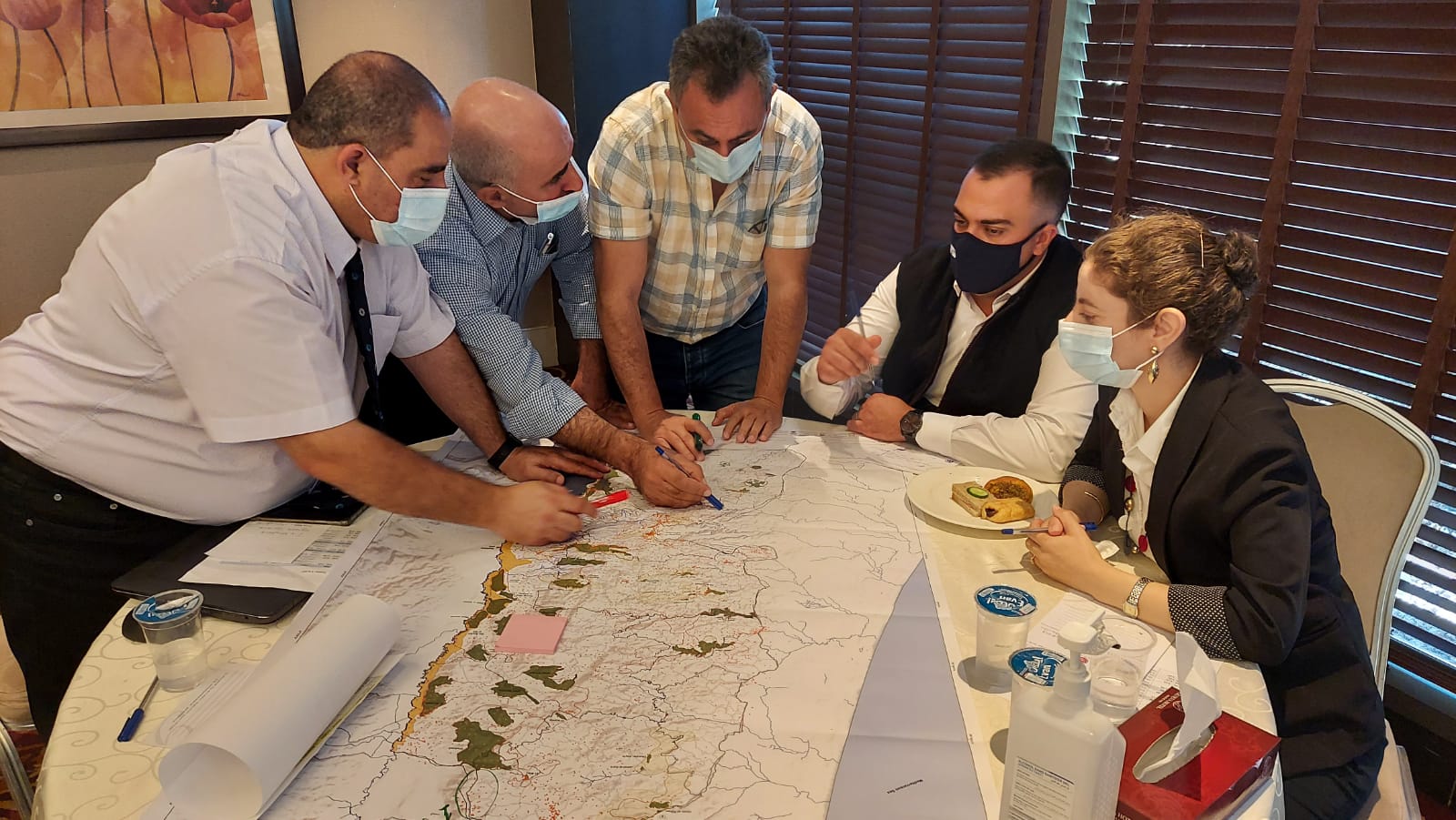The PA system will include regional cores, connected through other types of zones, biodiversity corridors, buffer zones, and other effective area-based conservation measures (OECMs). The protected area network will be designed and planned to adapt to the long-term impact of climate change, and other threats like desertification and pandemic outbreaks and their impacts on key habitats.
MAIN ACHIEVEMENTS IN 2021:
- Organising a kick-off meeting, with the key partner, the Environment Quality Authority (EQA), to set the first quarter plan and to agree on key events.
- Organising a virtual inception workshop which included the establishment of a project steering committee, discussion of spatial and non-spatial data collected and other organisational issues.
- Organising a two-day training workshop on systematic conservation planning in Amman, Jordan. The workshop was attended by 25 key stakeholders from Palestine. It addressed the principles of systematic conservation planning, proposed PAs network design criteria, and inclusion of local communities and women in the PAs designation process.
- Conducting situation analysis and ecological gap assessment to identify gaps in the current PAs network. The situation analysis was made through compiling all the reports, published and unpublished literature, spatial data related to land use and biodiversity in Palestine from national and international databases and other resources like government/non-government stakeholders.
Project implemented by: IUCN ROWA, in collaboration with the Environment Quality Authority (EQA).
Project funded by: Critical Ecosystem Partnership Fund (CEPF).

